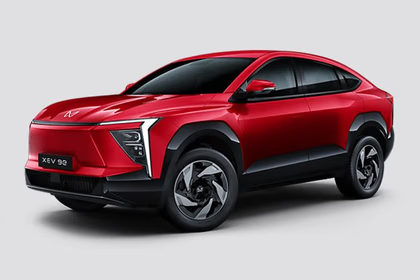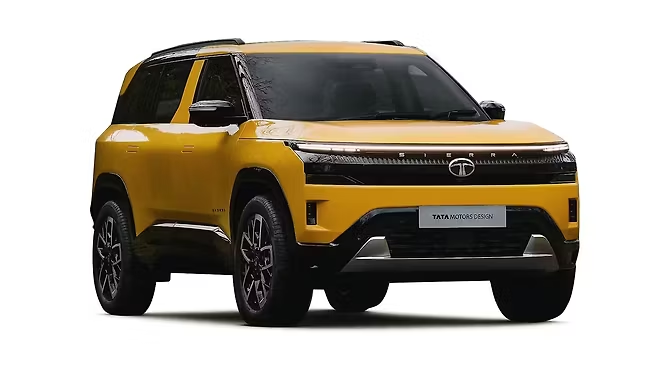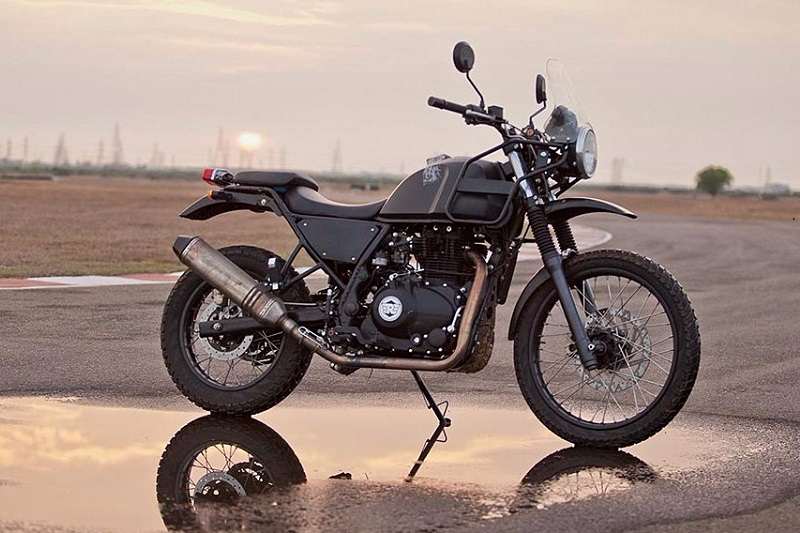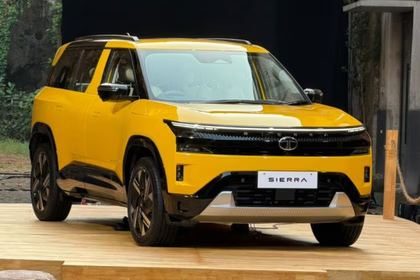Introduction
The Mahindra Treo has become one of India’s top-selling electric three-wheelers, particularly in the commercial and passenger markets. With increased fuel prices, tightening emission regulations, and government subsidies under the FAME II scheme, EVs are no longer just an abstract concept—now they’re a business-savvy move. The Treo, with its efficient electric motor, contemporary design, and dependable Mahindra brand support, has made huge ground in urban and semi-urban markets.
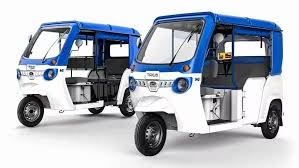
There has been a sudden transition to electric mobility, particularly in last-mile transportation. E-rickshaws have emerged as the preferred choice for:
- Transportation of passengers daily in urban areas
- Intra-city delivery and logistics services
- Fuel-efficient substitutes for petrol/diesel vehicles
- Environmentally friendly fleet operations and shared mobility platforms
The Mahindra Treo is usually praised as a low-maintenance, reliable, and profitability-generating option. Is it all just hype, or does it walk the talk on all sides—performance, reliability, and ROI? This review delves into every single detail of the Treo to assist you in making that decision: Is the Mahindra Treo a good investment for commercial purposes, or would someone else do it better?
Design & Build Quality
The Mahindra Treo is a well-thought-out design engineered for Indian city and semi-city conditions. It is a conventional e-rickshaw, but there’s substantial engineering in each curve and panel.
Modular design with sophisticated composite body
- The Mahindra Treo boasts a modular body with a rust-free, high-strength SMC (Sheet Moulding Compound) body that delivers toughness without adding weight.
Lightweight but robust frame
- Mahindra Treo’s composite build and optimized design strike a fantastic balance of strength and efficiency. It is lighter than conventional autos yet as strong on Indian rough roads.
Low-maintenance, gearless drivetrain
- Say goodbye to constant oil changes, clutch replacements, and transmission problems. The Treo has a direct-drive system without a gear or clutch, reducing wear and tear and long-term maintenance headaches.
Small footprint, ideal for crowded spaces
- Built with tight streets and heavily trafficked districts in mind, the Treo’s compact size makes it easy to maneuver, park, and handle even in congested urban markets or constricted delivery areas.
Battery & Range Performance
Mahindra Treo’s greatest advantage is its battery performance, which provides an ideal combination of range, reliability, and running cost for commercial operators.
7.37 kWh lithium-ion battery capacity
- The Mahindra Treo is fueled by a lithium-ion battery pack, which is much better than conventional lead-acid options in terms of energy density, efficiency, and so on. It’s also IP67-rated, which translates to superior resistance against dust and water, perfect for monsoon or dusty environments.
Claimed range: 125–140 km per charge
- Mahindra Treo has a range of up to 140 km in optimal conditions, well over what most urban passenger and delivery duties would require in one day.
Real-world range test (fully loaded)
- Mahindra Treo’s real-world usage, loaded with three travellers or up to 400 kg load, frequent stops, and city traffic, Treo normally offers a real-world range of 100–115 km. That still easily covers two full shifts for most drivers.
Charging time: 3–4 hours (average 15A socket)
- The Mahindra Treo can be charged completely with a standard household 15A plug, which requires approximately 3.5 to 4 hours. Although fast charging has not yet become standard, the convenience of depot- or home-based overnight charging provides significant flexibility.
Driving Experience
The Mahindra Treo provides a surprisingly smooth and effortless driving experience—something that differs from noisy, gear-driven conventional autos.
Smooth acceleration with 42 Nm torque
- Propelled by a high-torque 8 kW electric motor, the Treo offers 42 Nm instant torque, making pick-up smooth even in a fully loaded condition. From stop-and-go traffic or pulling away on an incline, acceleration is effortless.
No gear or clutch – easy handling for beginners
- The Treo employs a gearless, clutch-free direct drive system, which is very easy for even novices or new drivers to drive. This minimizes fatigue on extended shifts and shortens the learning period for commercial fleet integration.
Low Noise, Vibration, Harshness levels
- The Mahindra Treo is notably quieter and smoother than conventional diesel or petrol 3-wheelers. There’s no engine vibration, gear clatter, or cabin noise, so it’s a much better ride for the driver and passengers alike.
Flexible use for cargo and passengers
- Whether you choose the passenger model (Treo Auto) or the Treo Zor cargo model, the driving dynamics are stable, well-balanced, and responsive. The suspension configuration also performs better on speed bumps and potholes than several rivals.
Commercial Usability
The Mahindra Treo is not only an electric vehicle—it’s a daily driver designed to serve the needs of commercial customers, from ride-share operators to city delivery fleets.
Large Payload Capacity (Treo Zor Variant: 400–500 kg)
- The cargo variant—Mahindra Treo Zor—has a payload that reaches up to 500 kg, which is suitable for logistics businesses, Kirana store delivery, and even e-commerce last-mile delivery. Flatbed and delivery van variants provide business flexibility based on need.
Ideal for last-mile passenger & delivery requirements
- The regular Mahindra Treo passenger model easily accommodates 3+1 passengers, making it a perfect size for e-rickshaw aggregators, city transport systems, and short-distance ride-sharing services.
Lower running cost: Rs 0.50–Rs 0.60 per km
- For conventional diesel or CNG vehicles priced at Rs 2–Rs 3 per km, Treo’s electric powertrain significantly reduces the cost-per-km, with quicker ROI and greater daily profit margins. This is particularly relevant to fleet operators and daily wage drivers.
Driver-friendly cabin layout
- The Mahindra Treo has a roomy cabin with plenty of legroom, ergonomic controls, and expansive visibility for safe driving. Its side vent panels and slightly raised seats minimize strain from prolonged hours of use. Mahindra Treo is designed for the conditions of Indian roads and Indian businesses: high performance, low price, and maximum daily usage.
Charging Infrastructure & Ease of Use
The Mahindra Treo is designed to be hassle-free and convenient, even for those without access to an extensive charging network.
15A standard socket compatibility
- The largest benefit is that the Treo can be charged from a common 15A power outlet, which is common in most households, stores, and offices. This eliminates the cost of high-priced charging infrastructure and allows overnight charging at home or the depot.
Government + private charging support is growing.
- The state and central governments are encouraging the adoption of EVs, and public charging points—particularly for 3-wheelers—are growing swiftly in metropolitan cities such as Delhi, Lucknow, Hyderabad, and Bengaluru. Private companies such as Magenta, Tata Power, and Jio-bp are also launching 3-wheeler-compatible charging points.
Feasibility to swap batteries (not available currently)
- The Mahindra Treo does not have battery swapping. Nevertheless, due to the comparatively short charging duration (~3.5–4 hours), operation for two full shifts per day with scheduled charging breaks in between is possible.
Daily operation: smooth turnaround with night charging
- The Mahindra Treo users follow a dual-shift model: charge completely at night, use from morning to afternoon, and charge again optionally for evening/night use. With a range of up to 120–130 km per charge, it seamlessly integrates into the majority of commercial usage patterns.
Pricing, Subsidies & Running Costs
The Mahindra Treo achieves a wise balance between initial price, state incentives, and ultimate profitability, making it favoured by both individual drivers and fleet operators.
Ex-showroom price range: Rs 2.8–Rs 3.2 lakh
- Depending on the state, variant (passenger or cargo), and current dealership promotions, the Treo costs between Rs 2.80 lakh and Rs 3.20 lakh (ex-showroom). The Treo Zor cargo variant is a bit more, particularly in delivery van or flatbed configurations.
FAME II + state subsidies (up to Rs 1 lakh savings)
- The Treo is eligible for the central FAME II subsidy, cutting down on upfront cost by Rs 45,000–Rs 60,000. Maharashtra, Delhi, Gujarat, and Karnataka provide add-on EV subsidies or road tax exemptions, taking the effective on-road price below Rs 2.5 lakh in several cities.
Commercial buyers’ EMI/loan assistance
- Mahindra Finance and other NBFCs provide EMIs from Rs 5,000–Rs 6,500 per month, with minimal down payments and flexible repayment tenures—perfect for self-employed vehicle operators or fleet operators. Some states also have EV loan interest subvention schemes.
Long-term ROI vs diesel/CNG autos
- The running expense of only Rs 0.50–Rs 0.60/km, as opposed to Rs 2.5/km for diesel or Rs 1.8/km for CNG autos, Treo owners save Rs 1–Rs 1.2 lakh per year. Factor in the reduced maintenance (no clutch, no oil change), and the majority of Treo owners reap their return on investment within 2–3 years. If you need a high-savings, low-risk electric 3-wheeler that can be used daily for commercial purposes, the Mahindra Treo provides one of the best investment returns in its class.
Competitor Comparison
The Mahindra Treo scores on affordability, service network, and low operating costs—perfect for mass market adoption.
Treo vs Piaggio Ape E-City
- Treo: Rs 2.8–Rs 3.2 lakh
- Ape E-City: Rs 2.7–Rs 2.9 lakh
- Treo: 125–140 km
- Piaggio Ape: ~110 km
- Treo: 42 Nm torque
- Ape: 29 Nm torque
- Treo has more legroom and improved ride comfort
- Piaggio wins on brand heritage, but feels more plain inside
Treo Zor vs Euler HiLoad EV (Cargo Segment)
- Treo Zor: Rs 3.0–Rs 3.3 lakh
- Euler HiLoad: Rs 3.5–Rs 3.8 lakh
- Treo: Up to 500 kg
- Euler HiLoad: 688 kg (best-in-class)
- Treo: ~125 km
- Euler: ~150 km
- Treo: 42 Nm torque
- Euler: 88 Nm torque(dual motor setup)
Euler is more powerful for heavy-duty logistics, but Treo wins on pricing, usability, and service network.
Treo Zor vs Altigreen neEV (Cargo)
- Treo Zor: Rs 3.0–Rs 3.3 lakh
- Altigreen neEV: Rs 3.5–Rs 4.0 lakh
- Treo: 125–130 km
- Altigreen: Up to 150–160 km
- Treo: 500 kg
- Altigreen: 550–600 kg
- Treo provides basic protection with good visibility
- Altigreen’s cabin is tougher and spacious for rough routes
Altigreen is suitable for high-load intercity freight; Treo is more ideal for short-distance, high-frequency urban delivery.
Price-to-Performance Ratio
| Model | Price (Rs ) | Range (km) | Torque (Nm) | Payload (kg) | Best For |
| Mahindra Treo | Rs 2.8–3.2L | 125–140 | 42 | 3 pax / 500 | Daily city rides, ride-share |
| Piaggio Ape E-City | Rs 2.7–2.9L | 100–110 | 29 | 3 pax | Budget e-auto buyers |
| Euler HiLoad | Rs 3.5–3.8L | 140–150 | 88 | 688 | Heavy cargo deliveries |
| Altigreen neEV | Rs 3.6–4.0L | 150–160 | 45 | 550–600 | Intercity logistics, SME use |
Final Verdict – Is It Worth It?
When all aspects—design, battery, performance, price, and competition—of the Mahindra Treo are examined, it’s evident that it is not hype. It’s a balanced, business-ready electric three-wheeler that provides value in real-world terms for the Indian market.
The Mahindra Treo provides unparalleled user-friendliness, low running costs, and expandable charging without incurring large infrastructure expenditures. For independent rickshaw drivers, it’s an opportunity to escape increasing fuel costs and regular visits to the garage, making more money per km with significantly lower operating expenses (Rs 0.50/km versus Rs 2+ for diesel).
The environmentally friendly electric powertrain not only future-proofs your investment from fuel bans and emission laws but also makes you a beneficiary of government subsidies and possible incentives, such as exemption from tolls and road taxes in a few states.
Mahindra Treo is not for all. If you have to haul very heavy loads or run long intercity routes without maintenance, options like Euler HiLoad or Altigreen neEV might be better suited. But for the vast majority of daily urban use-cases—passenger ferry, last-mile logistics, or ride-sharing—Mahindra Treo finds the sweet spot.
In brief, if your enterprise relies on short, frequent journeys and you want a reliable EV with minimal running costs, the Mahindra Treo is well worth the outlay. The buzz? Entirely warranted—as long as you use it where it’s designed to excel.
FAQs
Q1. How long does the Mahindra Treo battery last?
The Mahindra Treo is equipped with a lithium-ion battery that generally runs for 5–6 years or about 1.2 to 1.5 lakh kilometers, based on usage behaviour and charging practices. It also has a warranty of up to 3 years or 80,000–1,00,000 km, based on the variant and geography.
Q2. Is the Treo usable for both cargo and passengers?
No, Mahindra Treo has differential variants for both purposes:
- The Treo (Auto) is meant for 3+1 passenger carrying.
- The Treo Zor is a cargo-oriented variant with a payload up to 500 kg.
Q3. What if the battery dies in the middle of the route?
Mahindra provides 24/7 roadside assistance in specific cities. A smart BMS (Battery Management System) that gives you a warning beforehand can avoid most battery failures. It is advisable to plan trips within the remaining range and maintain a backup charging facility if you work long shifts.
Q4. Are spare parts readily available?
Indeed, Mahindra has established a strong service and parts network in the major Indian cities and towns. As the Treo has fewer moving parts than a diesel vehicle, standard parts such as suspension, brakes, indicator lights, mirrors, and body panels are easily available at Mahindra-approved EV service centres.
Q5. Does Mahindra offer fleet support?
Mahindra has a specialised fleet and institutional sales force, as well as arrangements for bulk financing, servicing, and extended warranties. Bulk fleet buyers also receive custom charging solutions, operator training, and on-site maintenance packages to minimise downtime and maximise uptime.

